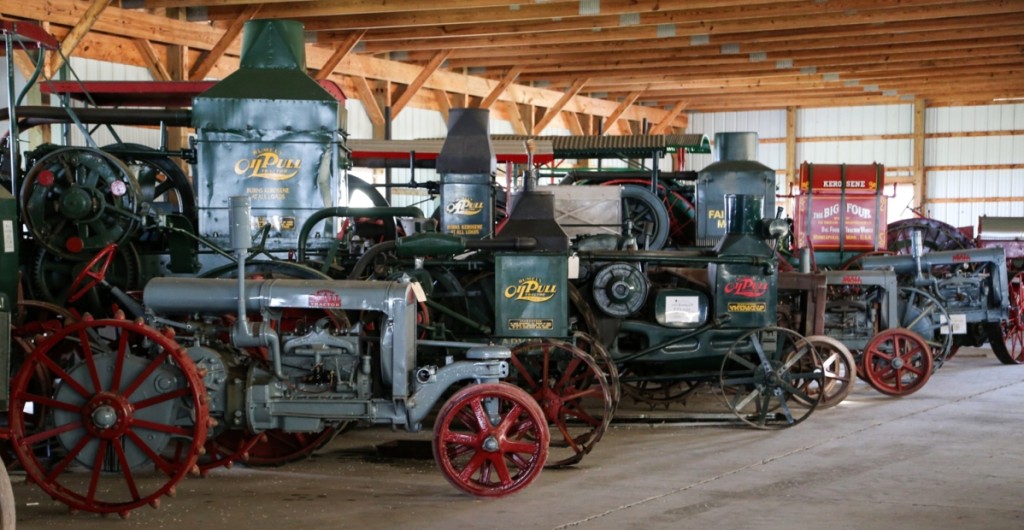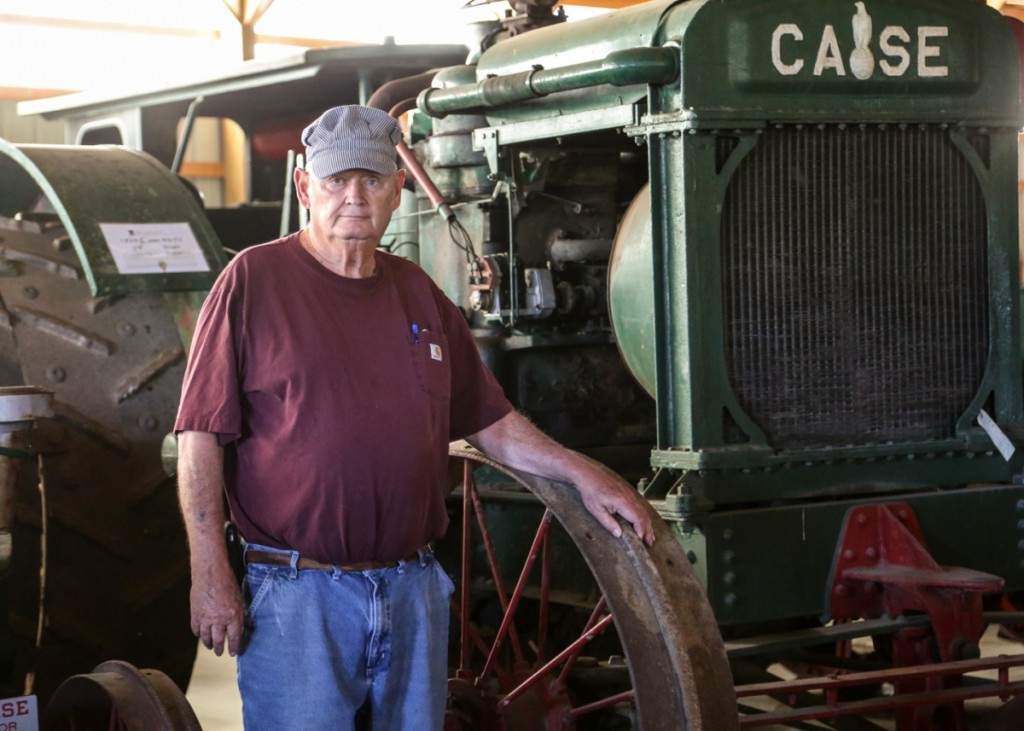Toplands Farm sits upon 625 bucolic acres in the hills of Roxbury, Conn. At its helm is Dudley Diebold, a gracious, second-generation farmer who took over the land from his parents, A. Richard and Dorothy Diebold, who bought the farm in 1942. The farm stays afloat by raising grass-fed beef, processing it and offering it for sale in its farmstand on the property. They also sell pork, roasting chickens and eggs, while also producing hay and seasoned firewood. But sheltered within the growing number of barns on the property is a motherlode of restored antique tractors and farm equipment, which is the largest collection in the Northeast. Diebold sat down with Antiques and The Arts Weekly to talk iron.
Toplands puts a focus on living history, how so?
We put on demonstrations and open houses to show how things used to be done. We have one open house each year. We run the tractors, operate the shingle mill, we cut and split wood, run the saw mill, shell and grind corn and also pump water.
How long have you been collecting tractors?
I bought my first in 1957, there was one here on the farm that I took over and my neighbor gave me one around then. I still have the one I bought in 1957.
How did the collection start?
I fooled around with Model T Fords and then a guy down on the river gave me his Fordson tractor. You could buy a Model T all painted up for $500. I got a John Deere tractor for $50. I played around with them for a long time. I was 17 when I got my first, but I got most of them in the last ten or 20 years.
What does the collection number to right now?
264.
Are you still buying them?
Yes, we bought one this spring and another in June. We try to get old and low production and odd or different ones. We try to keep it as old as we can. The earliest one is from 1899; that’s supposed to be the oldest production tractor in the United States. There are no records, but we’re guessing they made 200-300 of them. The early ones are pretty primitive.
How primitive?
Going back, they were just trying to build them. Different people were trying to make different things: some of them worked, and some of them never worked at all. The gas engine could be the first mechanical thing that farmers got into, and they weren’t mechanically trained. They didn’t know that it hurt to have water in the gas or if the spark plug was dirty. A lot of tractor companies had schools; they’d send two or three guys in to learn and train as a mechanic. In the very beginning, the blacksmith had to sometimes fix the tractor.
What are some of the more notable or odd ones?
We have a couple of Line Drive tractors; you drive them like a horse. We have a Rumely Line Drive; there are only two in existence – the other is in New York State. The second is a Jerry Line Drive. We have some one-of-a-kinds. We have a Flour City one-cylinder gas traction engine, which is the rarest one we have. It’s the best prize we have because it’s one of the oldest production tractors. We have several tractors that are low production. We have a Case model 40-72, made in 1923, and they only made 50 of them because they couldn’t sell them. There are only four or five left.

Diebold’s collection of tractors is sprawled out under four barns on the Toplands Farm property.
His examples include folk-made tractors from the dawn of their invention and on to early production examples. Many feature different setups and engines. The tractors hail from all over the United States and even include some that helped build major infrastructure projects in Connecticut.
Do you like the line drives?
Yes, we like them because they are rare – only six or eight companies made them. The concept made sense because you had teamsters who knew how to drive them.
How many different kinds of tractors are there?
There were hundreds of companies such as International, John Deere, Case, Massey-Harris, were the more popular ones. We have companies like Quincy, Allwork, Whitney, Pioneer and companies people have never heard of. We own two steamers but have three on the property: a Nichols and Shepard, which is the oldest one we have; a Huber return flue, circa 1903; and a Case steamer, which is from early 1912.
Does restoration affect value?
We have some original tractors that have never been restored. This seems to be the popular thing in cars and tractors; they like to leave them the way they were found.
And all of yours run?
All but one, and we’re fixing it.
Was there one you ever quit on?
Not yet – came close a few times. Sometimes you have to make parts. There are several places that will cast them out of cast iron. You have to do the machine work, but they’ll do the casting.
How many people have a collection as large as yours?
You can’t really tell; there are collections that are larger than ours.
Tell me about the market.
Certain items are appreciating just about as fast as anything you can put your money in. The common tractors have gone down a bit, but the oddball and rare stuff is still going up.
What was it like buying decades ago?
In the 60s, you could get them $200, but those same tractors now could bring up to $200,000. There are a lot of people that basically have no love for them; they just buy them for investment. Most people who fool with them have Iron Fever, or Rusty Fever. That is what they claim we all suffer from. You can buy 100 of them and you’re still not cured. It’s gotten to be popular, but when I started buying them, only a few were collecting.
What do you do when you run out of space?
Put up another barn. Ours are 80 by 160 and 14 feet high. They are put up by an Amish crew in New Holland, Penn. The crew gets the trusses up in six hours. We keep them well; a lot of people don’t have this kind of set up, but there’s nothing mechanical you can park outside and expect it to be in good shape.
Anything you’re on the lookout for?
Not one particular thing, but always the oddball stuff.
-Greg Smith





